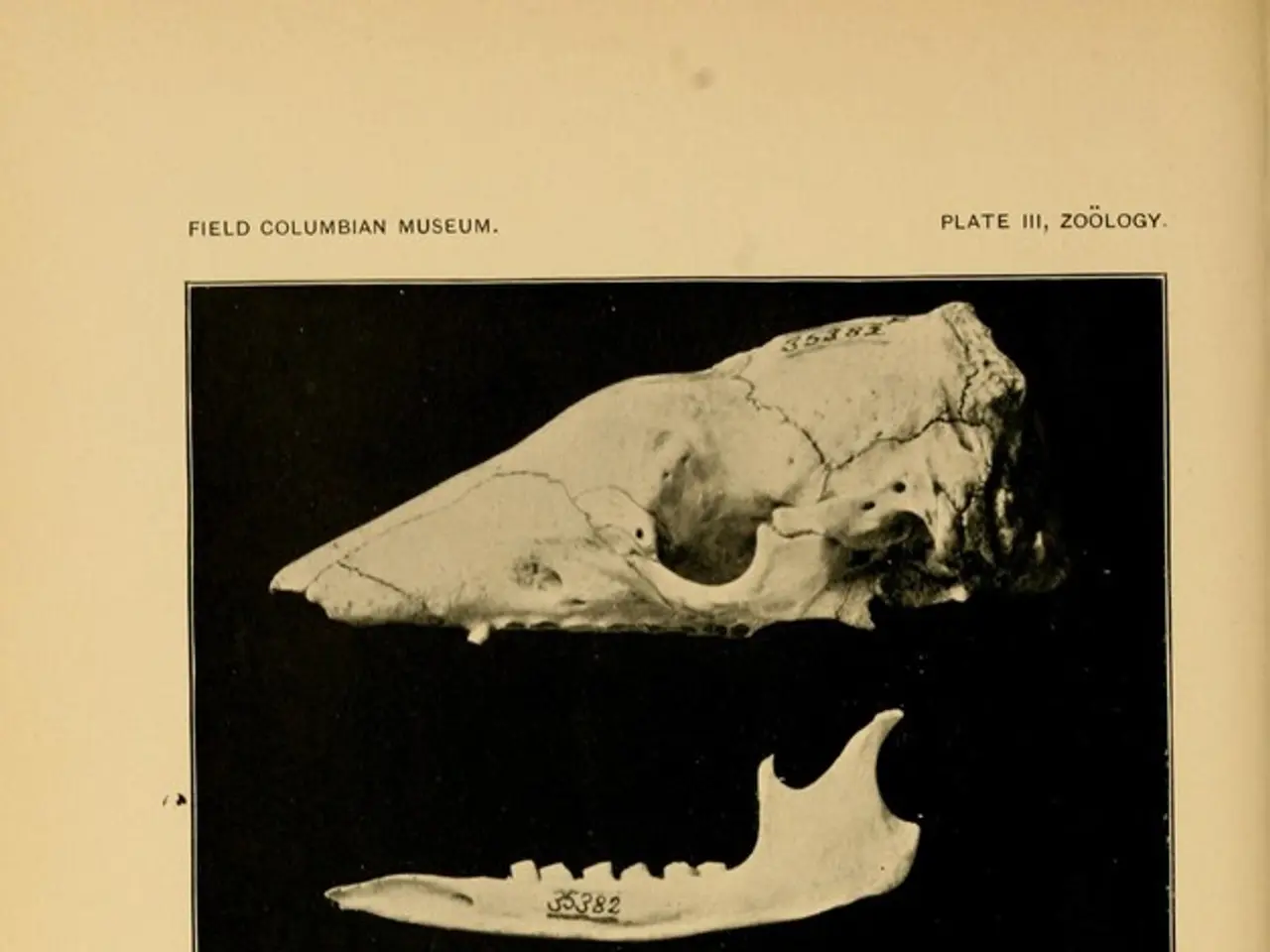Alternative approaches for addressing osteoporosis: Physical activity, nutrition, and additional strategies
Tackling Osteoporosis: A Comprehensive Approach
Osteoporosis, a condition that weakens bones and increases the risk of fractures, can be managed effectively through a combination of lifestyle changes, diet, exercise, and medical intervention.
For those battling osteoporosis, quitting smoking and limiting alcohol consumption is crucial, as these habits can weaken bones further. It's always best to consult with a doctor for personalised advice on treating osteoporosis.
A balanced diet rich in essential nutrients plays a vital role in maintaining bone health. Calcium and vitamin D are essential for bone structure and absorption respectively. Foods rich in calcium include dairy products, leafy greens like broccoli and kale, almonds, and fortified plant-based milks. Vitamin D can be sourced from sunlight exposure, fatty fish, egg yolks, and mushrooms. In some cases, supplementation may be advised by a doctor.
Protein, especially from animal sources, supports bone formation and density. Sources include lean meats, eggs, seafood, nuts, lentils, beans, and tofu. Vitamin K2, found in animal products and fermented foods, helps the body metabolize calcium. Magnesium, zinc, and collagen peptides are other minerals and supplements that can support bone health.
Regular physical activity is another key factor in treating osteoporosis. Weight-bearing and resistance training activities stimulate bone growth and maintain density. These activities include walking, running, dancing, lifting weights, and strength training. Progressive resistance training 2–5 times weekly for several months is particularly effective. Balance exercises, such as Tai Chi and yoga, also reduce the risk of falls and fractures.
Multicomponent exercise programs, combining strength, cardio, and balance training, yield the best bone density improvements and quality of life. It's important to note that exercise programs should be structured and supervised, especially in those with osteoporosis.
Lifestyle factors such as ensuring adequate sleep and managing hormonal balance are also crucial for optimal bone health.
In conclusion, a calcium, vitamin D, protein-rich diet, combined with weight-bearing and balance exercises, and lifestyle modifications offers an effective natural strategy to increase bone density and slow osteoporosis progression. Regular exercise can help improve coordination and balance, reducing the risk of falls and fractures. Always consult with a healthcare professional for personalised advice and guidance.
[1] National Osteoporosis Foundation. (2021). Exercise and Osteoporosis. [online] Available at: https://www.nof.org/patients/treatment/exercise/
[2] International Osteoporosis Foundation. (2017). Nutrition and Osteoporosis. [online] Available at: https://www.iofbonehealth.org/nutrition-and-osteoporosis
[3] Mayo Clinic. (2021). Osteoporosis Prevention, Diagnosis & Treatment. [online] Available at: https://www.mayoclinic.org/diseases-conditions/osteoporosis/diagnosis-treatment/drc-20353833
[4] Cleveland Clinic. (2021). Osteoporosis: Foods to Boost Bone Health. [online] Available at: https://my.clevelandclinic.org/health/articles/17395-osteoporosis-foods-to-boost-bone-health
[5] Harvard Health Publishing. (2020). Collagen supplements: What the science says. [online] Available at: https://www.health.harvard.edu/staying-healthy/collagen-supplements-what-the-science-says
Read also:
- Is it advisable to utilize your personal health insurance in a publicly-funded medical facility?
- Harmful Medical Remedies: A Misguided Approach to Healing
- Can the flu vaccine prevent stomach issues mistaken for the flu? Facts about flu shots revealed.
- Struggling Health Care Systems in Delaware Grapple with the Surge of an Aging Demographic




